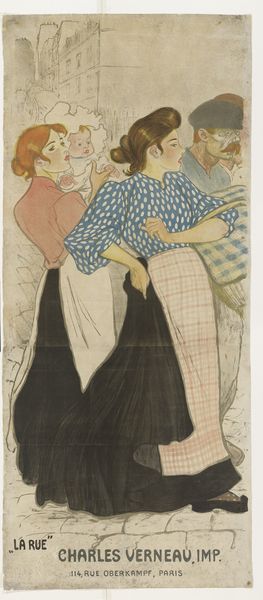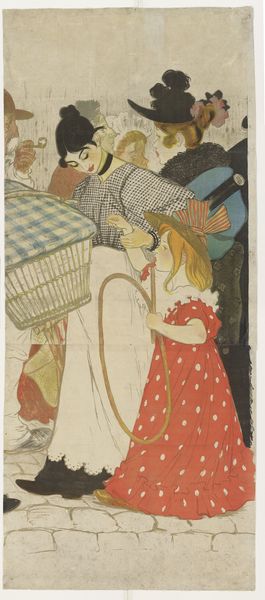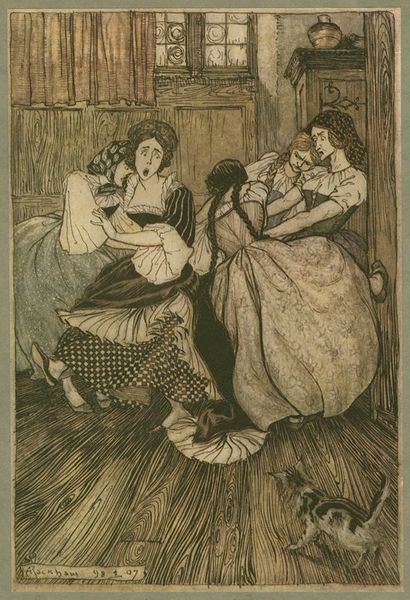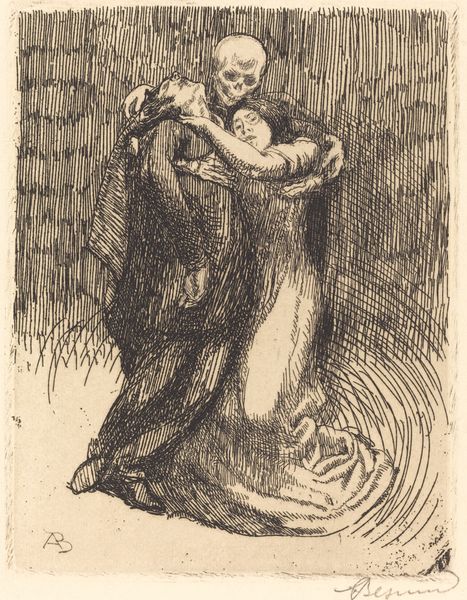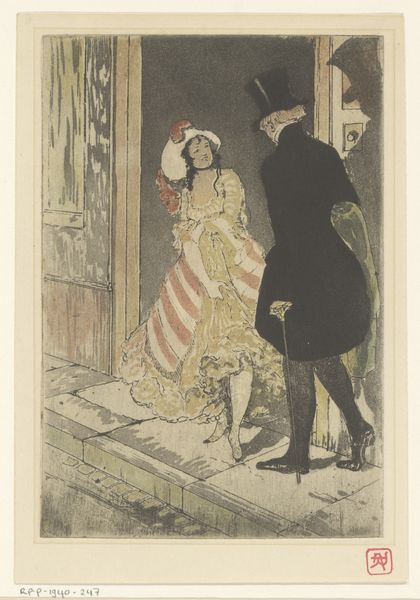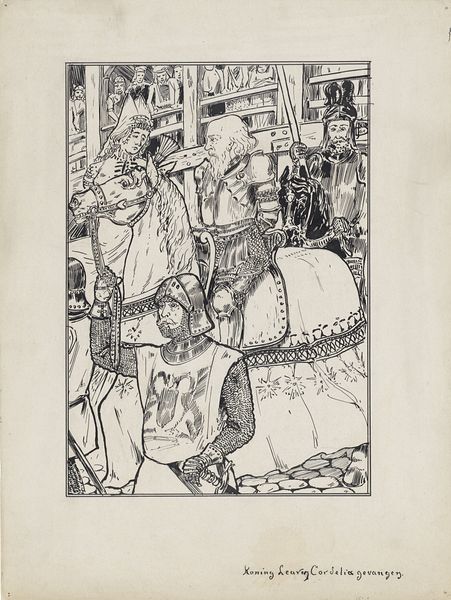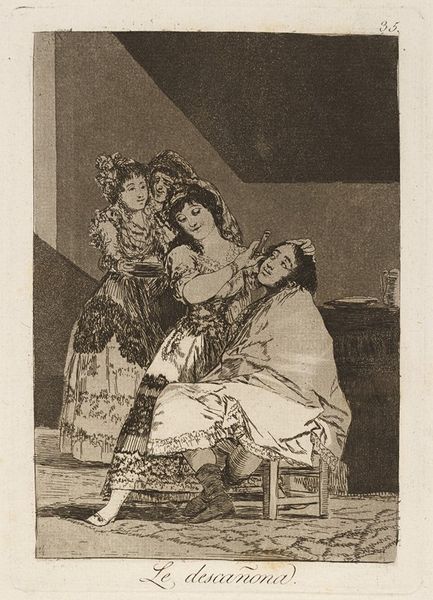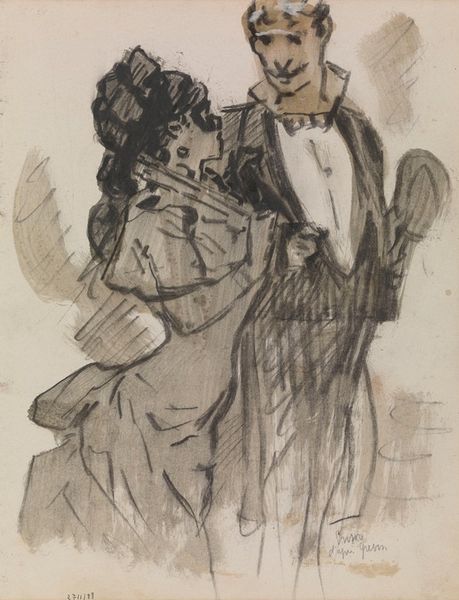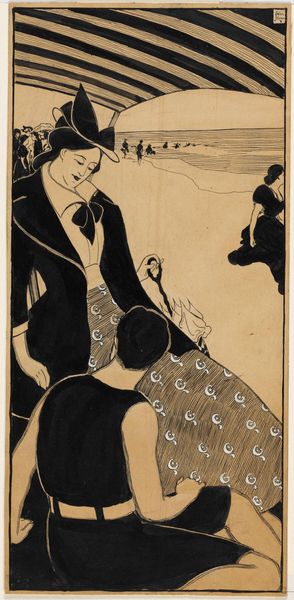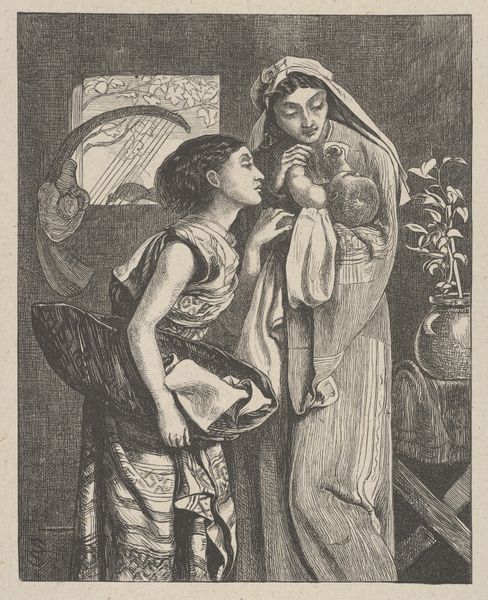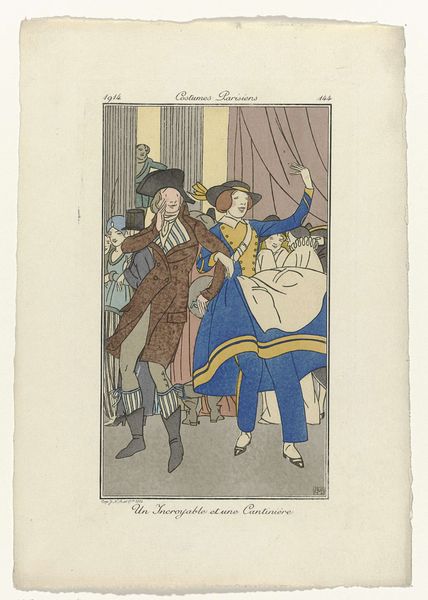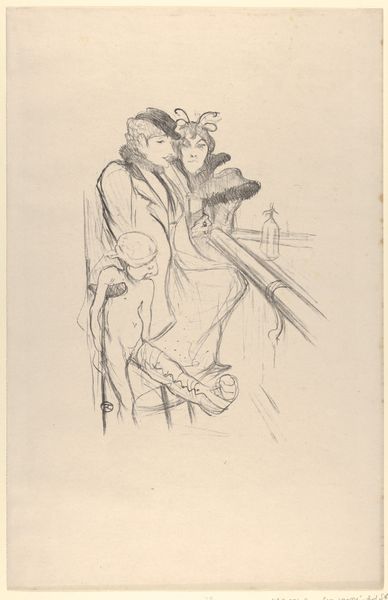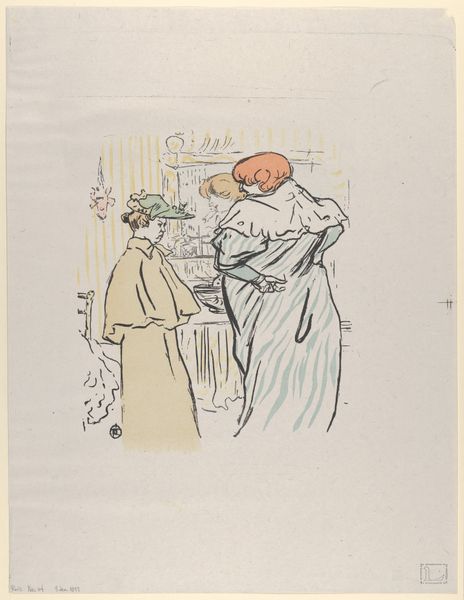
print, watercolor
# print
#
war
#
caricature
#
figuration
#
watercolor
#
symbolism
#
watercolour illustration
Dimensions: height 860 mm, width 574 mm
Copyright: Rijks Museum: Open Domain
Curator: What strikes me immediately is the overall somber, protective mood; it feels charged with symbolism and a certain nationalistic fervor. Editor: You've got a good eye! This is a 1917 watercolor illustration by Maurice William Greiffenhagen entitled "Woman with Sword Embracing Two Children." It appears to be a print as well. He seems to position the image of the nation-state as both powerful and intimately nurturing. Curator: Exactly! The sword isn't merely an emblem of aggression; it stands for sovereignty, duty, perhaps even sacrifice. The children represent the future of the nation, their vulnerability in contrast to the maternal figure’s strength is palpable. What cultural narratives might be informing the visual vocabulary here? Editor: It evokes classic images of maternal figures from antiquity, re-imagined. Note the attire; it's both contemporary and classical. The colors are potent visual signifiers too. Red, white, and blue, strongly associate this piece with patriotism. But observe how somber these colors are—almost as if tempered by grief. Curator: Right, it is not mere nationalistic pride but a solemn charge of safeguarding cultural identity through tumultuous times. Look closer, the architectural beam at the top almost appears like a stage set, giving the whole composition a theatrical character, but more importantly drawing from established iconography of heroism and valor. The children's garb looks distinctly like European peasant styles. It’s an interesting layering of symbolic tropes! Editor: Interesting observation about the theatrical staging. It does lend the artwork a grand narrative. It also resonates with the tradition of using art for public persuasion or mobilization, typical in times of conflict. So the watercolor's seemingly humble medium carries an almost monumental weight, in part through its very knowing construction through established symbols. Curator: Precisely. Considering the era in which it was created, amid global conflict, it's a clear instance of political mobilization and use of archetypal forms to stir emotive responses, reinforcing shared cultural ideals under peril. Editor: Indeed. It is more than a snapshot of war time; it functions almost as a memorial itself, attempting to distill a specific collective experience in response to times of turbulence, into symbols that ensure enduring recognition. Curator: A valuable reminder that, even within seemingly gentle watercolor illustrations, lie entire political and social narratives clamoring for a voice! Editor: Agreed, let’s keep seeking those whispers buried within plain sight.
Comments
No comments
Be the first to comment and join the conversation on the ultimate creative platform.
